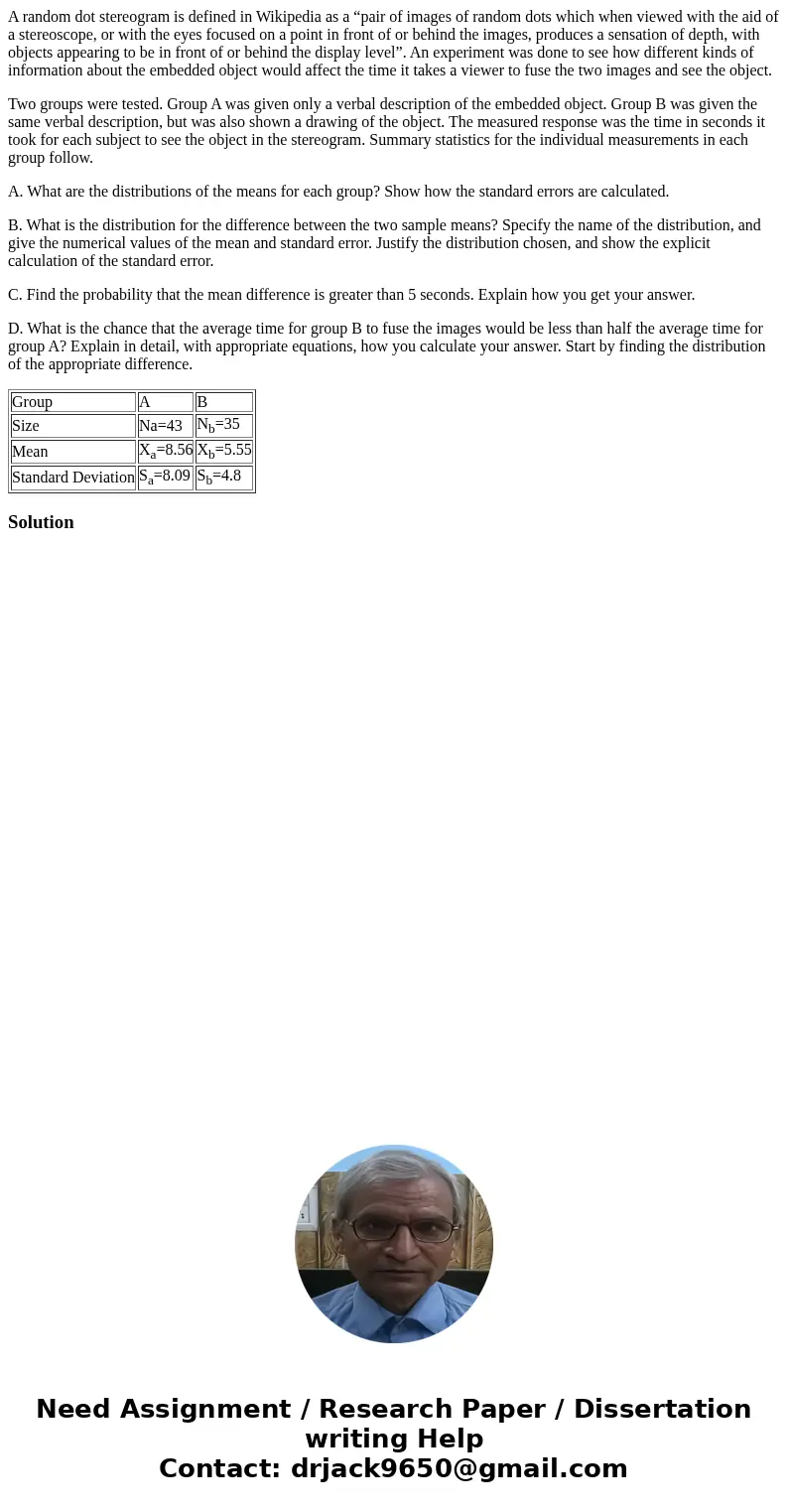A random dot stereogram is defined in Wikipedia as a pair of
A random dot stereogram is defined in Wikipedia as a “pair of images of random dots which when viewed with the aid of a stereoscope, or with the eyes focused on a point in front of or behind the images, produces a sensation of depth, with objects appearing to be in front of or behind the display level”. An experiment was done to see how different kinds of information about the embedded object would affect the time it takes a viewer to fuse the two images and see the object.
Two groups were tested. Group A was given only a verbal description of the embedded object. Group B was given the same verbal description, but was also shown a drawing of the object. The measured response was the time in seconds it took for each subject to see the object in the stereogram. Summary statistics for the individual measurements in each group follow.
A. What are the distributions of the means for each group? Show how the standard errors are calculated.
B. What is the distribution for the difference between the two sample means? Specify the name of the distribution, and give the numerical values of the mean and standard error. Justify the distribution chosen, and show the explicit calculation of the standard error.
C. Find the probability that the mean difference is greater than 5 seconds. Explain how you get your answer.
D. What is the chance that the average time for group B to fuse the images would be less than half the average time for group A? Explain in detail, with appropriate equations, how you calculate your answer. Start by finding the distribution of the appropriate difference.
| Group | A | B |
| Size | Na=43 | Nb=35 |
| Mean | Xa=8.56 | Xb=5.55 |
| Standard Deviation | Sa=8.09 | Sb=4.8 |
Solution

 Homework Sourse
Homework Sourse